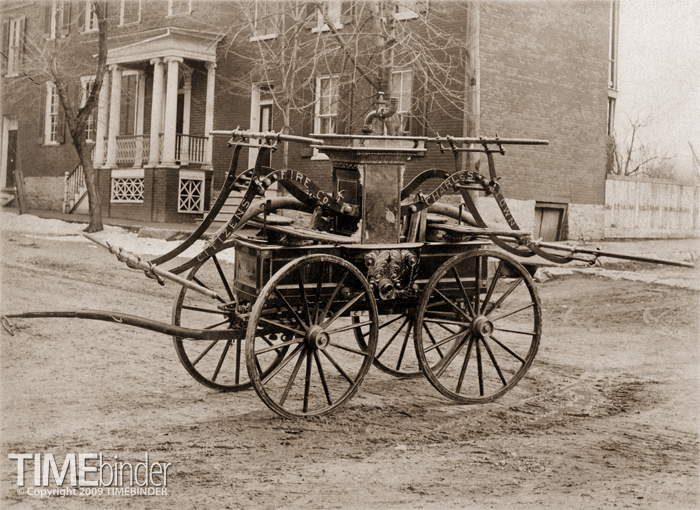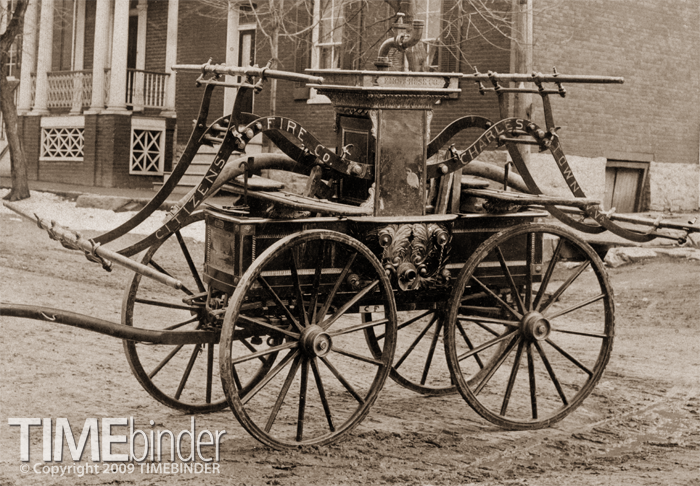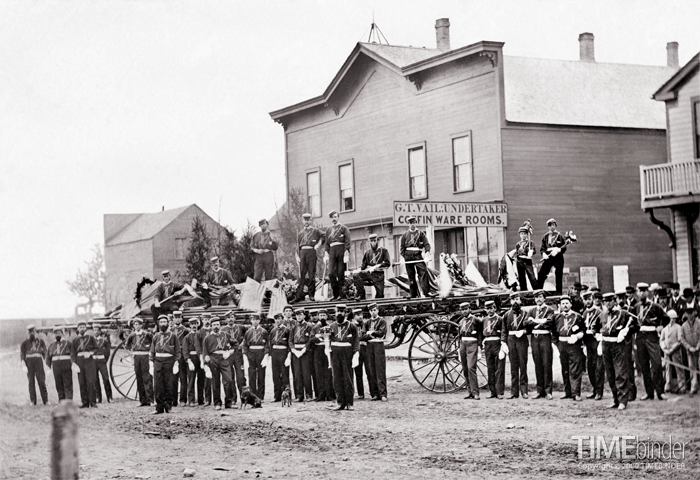1853 First Hose Co. Hand Pumper
 Sunday, November 8, 2009 at 9:31PM
Sunday, November 8, 2009 at 9:31PM 
Written in pencil on the back of this large cabinet card: Hand Engine of the Citizen's Fire Co., built in 1853 for the First Hose Co. of Hagerstown, Md.
The Citizen's Fire Company of Charles Town, W. VA, acquired it at some later date and for some reason it was photographed on a residential street (Miller Home, Washington St. is indicated) unattached to the team of horses that would have pulled it and with no fire house as part of the picture. Was it out of civic pride and for the record, or was it already an outdated object of curiosity well over a century ago when it was taken?
Early railroad engines, steam tractors, fire engines and other large machinery, and even small appliances like sewing machines or typewriters, were lavishly ornamented by Victorian designers as if they were objects of art, perhaps because they were conflicted by the rapid evolution from an agrarian economy to the appalling filth and ugliness of urban mass industrialization. They got over it – industrial design was soon a matter of efficiency and cost.
This tiny pumper was operated by four men as part of a team who took enormous pride in their strength and stamina as well as their status as protectors of life and property. Steam pumpers were coming into existence at the time this pumper was built, but there was enormous resistance to adopting them even when it became evident that they were far superior in performance – the cost of fire insurance and ever taller buildings brought cities to a more rational mindset: machine over muscle.







